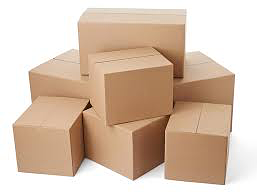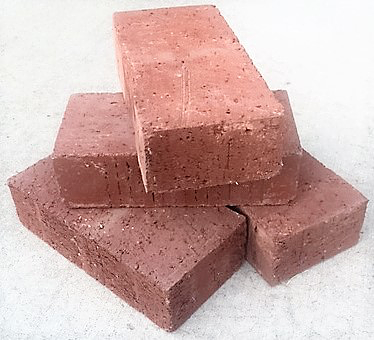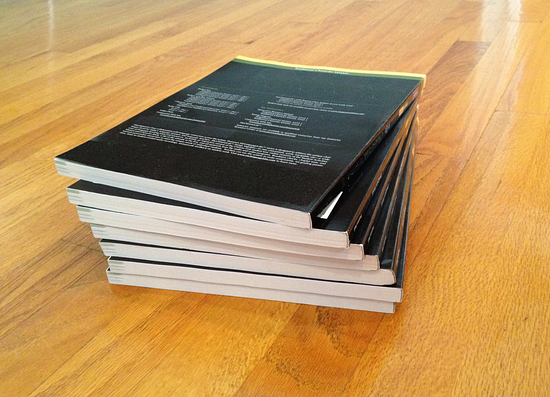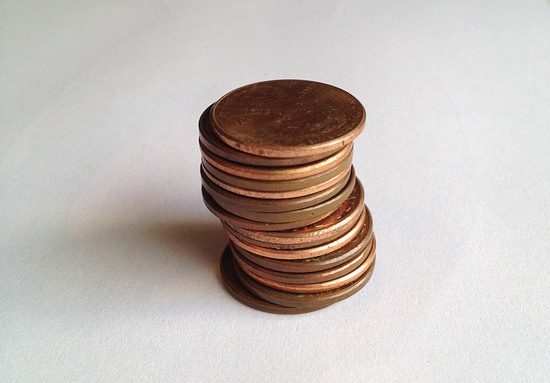Lesson 1Size of Divisor and Size of Quotient
Let’s explore quotients of different sizes.
Learning Targets:
- When dividing, I know how the size of a divisor affects the quotient.
1.1 Number Talk: Size of Dividend and Divisor
Find the value of each expression mentally.
1.2 All Stacked Up
-
Here are several types of objects. For each type of object, estimate how many are in a stack that is 5 feet high. Be prepared to explain your reasoning.
- Cardboard boxes

- Bricks

- Notebooks

- Coins

- Cardboard boxes
-
A stack of books is 72 inches tall. Each book is 2 inches thick. Which expression tells us how many books are in the stack? Be prepared to explain your reasoning.
a.
b.
c.
d.
- Another stack of books is 43 inches tall. Each book is -inch thick. Write an expression that represents the number of books in the stack.
1.3 All in Order
-
Your teacher will give your group two sets of division expressions. Without computing, estimate their values and arrange each set of expressions in order, from largest to smallest. Be prepared to explain your reasoning. When finished, pause for a class discussion.
-
Record the expressions in each set in order from largest to smallest.
Set 1
Set 2
-
Without computing, estimate each quotient and arrange them in three groups: close to 0, close to 1, and much larger than 1. Be prepared to explain your reasoning.
close to 0
close to 1
much larger than 1
Are you ready for more?
Write 10 expressions of the form in a list ordered from least to greatest. Can you list expressions that have value near 1 without equaling 1? How close can you get to the value 1?
Lesson 1 Summary
Here is a division expression: . In this division, we call 60 the dividend and 4 the divisor. The result of the division is the quotient. In this example, the quotient is 15, because .
We don’t always have to make calculations to have a sense of what a quotient will be. We can reason about it by looking at the size of the dividend and the divisor. Let’s look at some examples.
-
In and in the dividend is larger than the divisor. is very close to , which is 9. The quotient is close to or 6.
In general, when a larger number is divided by a smaller number, the quotient is greater than 1.
-
In and in the dividend and divisor are very close to each other. is very close to , which is or 0.99. The quotient is close to , which is 1.
In general, when we divide two numbers that are nearly equal to each other, the quotient is close to 1.
-
In and in the dividend is smaller than the divisor. is very close to , which is or 0.1. The division is close to , which is or 0.25.
In general, when a smaller number is divided by a larger number, the quotient is less than 1.
Lesson 1 Practice Problems
Order from smallest to largest:
- Number of pennies in a stack that is 1 ft high
- Number of books in a stack that is 1 ft high
- Number of dollar bills in a stack that is 1 ft high
- Number of slices of bread in a stack that is 1 ft high
Use each of the numbers 4, 40, and 4000 once to make true statements.
-
The value of is close to 1
-
The value of is much less than 1.
-
The value of is much greater than 1.
-
Without computing, decide whether the value of each expression is much smaller than 1, close to 1, or much greater than 1.
A rocking horse has a weight limit of 60 pounds.
- What percentage of the weight limit is 33 pounds?
- What percentage of the weight limit is 114 pounds?
-
What weight is 95% of the limit?
Compare using , , or .
-
0.7 ______ 0.70
-
______
-
0.9 ______ 0.12
-
Diego has 90 songs on his playlist. How many songs are there for each genre?
- 40% rock
- 10% country
- 30% hip-hop
- The rest is electronica
A garden hose emits 9 quarts of water in 6 seconds. At this rate:
- How long will it take the hose to emit 12 quarts?
- How much water does the hose emit in 10 seconds?